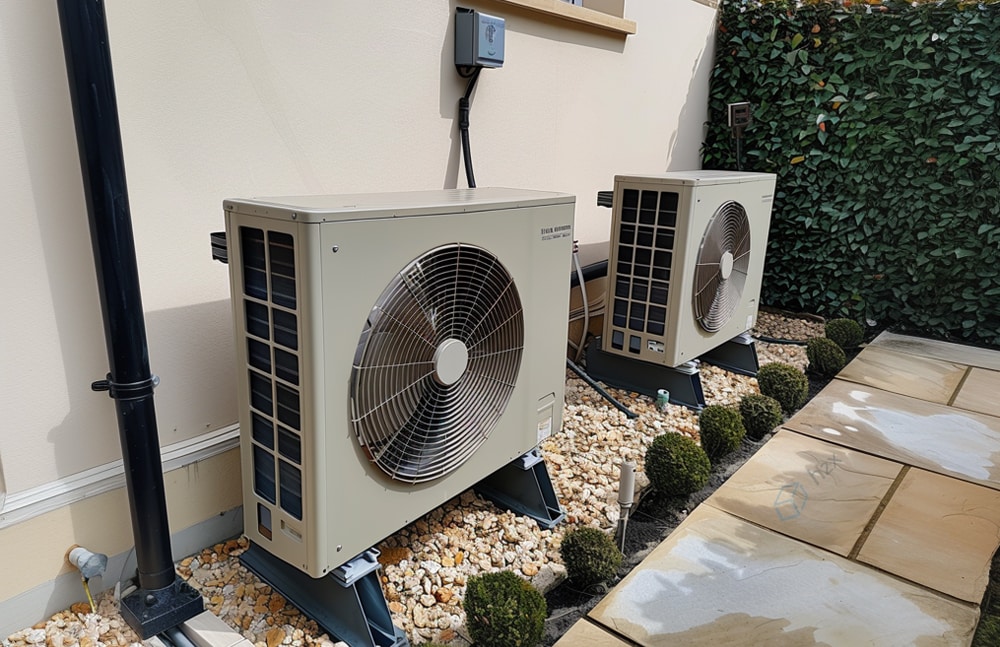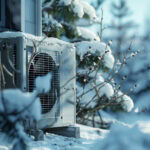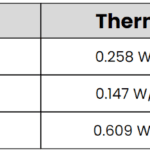
Cascade Heat Pumps: Redefining Heating for Large Spaces
Discover the innovation of cascade heat pumps in our blog below! See how they redefine heating for large spaces with efficiency and reliability.

Introduction
Cascade heat pumps consist of multiple interconnected heat pump units, each operating autonomously yet contributing to a cohesive system.
This innovative configuration ensures scalability and robust performance, adeptly meeting the diverse heating needs of large spaces.
How Does a Cascade Heat Pump Work?
Individual heat pumps within the cascade system operate independently, harnessing heat from the surrounding environment.
The heat produced by each unit converges at common points, like a header or buffer tanks, facilitating a unified heat output.
This allows the system to adapt to fluctuating heating demands, with units activating or deactivating as necessary, ensuring optimal efficiency.
Why Are Cascaded Heat Pumps Energy Efficient?
With their multiple independent units, cascade heat pumps excel in managing the fluctuating heating demands of large buildings, operating more efficiently, especially during frequent periods of lower demand.
This adaptability ensures that each unit can modulate its output to match specific needs, significantly reducing energy waste and enhancing system efficiency in varying conditions.
Typical Use Case of a Cascade Heat Pump
In expansive residential settings, a cascaded heat pump can provide improved efficiency, dynamically adjusting their output in response to shifting demand levels.
This contrasts with the limitations of a singular, large unit, which may not operate as effectively during periods of low demand.
Commercial venues, such as shopping centres and office buildings, benefit from the system’s ability to tailor temperature settings across various zones throughout the day.
Benefits of Parallel Cascade Heat Pumps
- Reliability: Operational independence of each unit within the cascade system bolsters reliability, reducing potential downtime and maintenance challenges.
- Energy Efficiency: Energy efficiency is amplified as units are only active when needed, curtailing superfluous energy use and diminishing operational expenses.
- Reduced Environmental Impact: The system’s design, focusing on energy conservation and the possibility of integrating eco-friendly refrigerants, mitigates environmental impact.

Cascade Heat Pumps in Software like h2x
Designing a cascaded system in a tool like h2x equals a complete solution for optimising heating systems in large spaces.
Within h2x software, a cascaded heat pump is seamlessly integrated, providing engineers with advanced tools to accurately size, model, and analyse these systems.
Our software facilitates precise calculations, ensuring optimal performance and energy efficiency.
Are you ready to encounter the capabilities of h2x for yourself? Book your free demo or start your free trial today!
Conclusion
Cascade heat pumps represent an advanced, eco-friendly solution for heating vast residential and commercial spaces, merging cascade efficiency with the versatility of parallel configurations.
Their capability to deliver area-specific heating and their reliability and energy-saving features establish them as a prime option for contemporary heating requirements.
FAQs
How does a cascade heat pump handle maintenance and potential failures within the interconnected system?
Cascade heat pumps typically have a decentralised design, meaning that maintenance and potential failures within the system are managed independently by each unit.
This setup enhances reliability by reducing the likelihood of widespread system failures.
However, specific maintenance protocols and troubleshooting procedures may vary depending on the manufacturer and the design of the cascade systems.
Are there any limitations or challenges associated with the installation or operation of a cascade heat pump in specific environments or climates?
While a cascade heat pump offers numerous benefits, there may be certain limitations or challenges associated with the installation and operation.
Factors such as the layout of the building, available space for equipment installation, and compatibility with existing HVAC infrastructure could impact the feasibility and effectiveness of deploying cascade heat pumps.
Additionally, environmental factors such as climate and local regulations may influence their performance and efficiency.
Can cascade heat pumps be integrated with renewable energy sources, such as solar or geothermal, to further enhance their energy efficiency and environmental sustainability?
Cascade heat pumps have the potential to be integrated with various renewable energy sources, further enhancing their energy efficiency and environmental sustainability.
For example, coupling a cascade heat pump with solar panels or geothermal systems can complement their operation by providing renewable energy inputs for heating purposes.
This integration not only offers enhanced energy management capabilities, but also reduces dependence on fossil fuels, thereby lowering carbon emissions and environmental impact.
How does a cascaded system differ from a traditional heating system?
Cascade heat pumps utilise multiple interconnected heat pump units, allowing for more efficient heating in large spaces compared to single heat pump systems.
This configuration enables better adaptation to fluctuating heating demands and offers enhanced scalability.
Can cascade heat pumps provide both heating and hot water for domestic use?
Yes, one can configure a cascaded heat pump system with two heat pumps to supply both heating and domestic hot water.
By integrating multiple heat pumps, they can efficiently meet both space heating and hot water demands in residential and commercial settings.
Are cascade heat pumps suitable for cold weather climates?
Cascade heat pumps, particularly those equipped with modulating technology and capable of producing higher temperatures, can effectively operate in cold weather climates.
However, one should consider factors such as the air source heat pump type, control system, and electricity supply to ensure optimal performance during cold weather conditions.
How do maintenance costs for a cascaded heat pump system compare to traditional heating systems?
While cascade heat pumps may have higher upfront costs and require more sophisticated maintenance due to the presence of multiple units, their long-term maintenance costs can be comparable to or lower than a traditional heating system.
Regular servicing and upkeep are essential to ensure efficient operation and prolong the lifespan of cascade heat pump systems.
Can a cascade heat pump provide high-temperature heating for specific applications?
Yes, one can configure a cascaded heat pump system to deliver higher temperature outputs for applications that require it.
By modulating the operation of multiple heat pumps, they can achieve higher temperatures while maintaining energy efficiency, making them suitable for various heating requirements in large spaces.
h2x: All-In-One Tool for Calculating, Designing, Estimating, and Paperwork

What's in the Pipeline?
Get technical resources delivered to your inbox weekly!
Testimonials
What Installers Say
What Consultants Say
A game changer for the humble plumber. Incredible.
Brad Winkel
Director at Queenstown Plumbing
Brilliant, simple and easy to use. Game changer.
James Major
Director at Hubb
Big time game changer to the industry!
Viv Jude
Director at UHC
Incredible software! Super user-friendly and allows you to save so much time.
Devni Gamage
Engineer at DMA
h2x is great software, our company use it nearly every day. It is easy to use with direct conversion from h2x to Revit.
Callum Craig
Engineer at WDE
h2x is fantastic software. It is very easy to use and the ability to output to Revit is a fantastic time saver.
Joe Kirrane
Engineer at MEP











